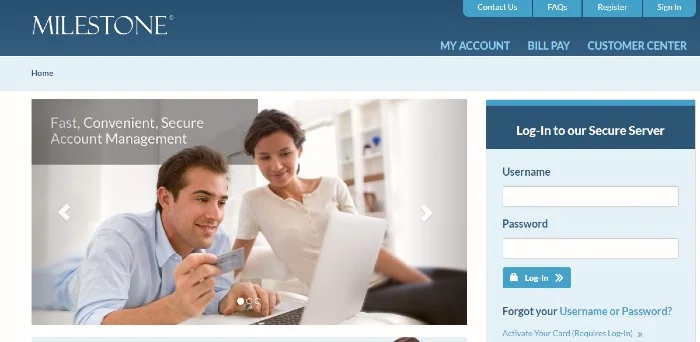If you’re looking to build or improve your credit score, MyMilestoneCard can be a great tool to help you along the way. Whether you’re new to credit or working on rebuilding your score, this credit card offers a manageable and accessible way to take control of your finances. However, like any financial product, it’s important to use your MyMilestoneCard card responsibly to see the best results. Many people make common mistakes that can hurt their credit score or lead to unnecessary fees. In this post, we’ll highlight the top mistakes to avoid when using MyMilestoneCard, and how you can make the most of this credit-building tool.
1. Missing Payments
One of the biggest mistakes you can make when using your MyMilestoneCard card is missing a payment. Payment history is one of the most important factors that influence your credit score, and making late payments can have a significant negative impact on it. Late payments can stay on your credit report for up to seven years, which could make it harder to get approved for loans or other credit cards in the future.
To avoid missing payments, set up reminders or schedule automatic payments through your online account. You can also log into the online portal to see when your payment is due. By ensuring that you always make at least the minimum payment on time, you can keep your credit score on track and avoid late fees.
2. Not Paying Off Your Balance in Full
Another mistake many cardholders make is only making the minimum payment and leaving the balance on their MyMilestoneCard card. While making the minimum payment keeps you in good standing and avoids late fees, it’s important to pay off the entire balance each month if possible. Carrying a balance from month to month can lead to high interest charges, which can make it harder to pay off your debt over time.
The best strategy is to pay off your balance in full each month to avoid interest charges. This will help you stay out of debt and keep your finances healthy. If you can’t pay off the full balance, try to pay more than the minimum to reduce your debt faster and keep your credit utilization low.
3. Maxing Out Your Credit Limit
Your MyMilestoneCard card comes with a credit limit, which is the maximum amount you can borrow. Using too much of your available credit — also known as high credit utilization — can negatively impact your credit score. Experts recommend keeping your credit utilization under 30% of your total credit limit. For example, if your limit is $500, try to keep your balance below $150.
Maxing out your credit limit can signal to credit bureaus that you may be relying too heavily on credit, which could hurt your score. It also increases the likelihood of missed payments or late fees, as you may find it harder to make larger payments. Try to use your card responsibly and avoid spending too much at once.
4. Not Monitoring Your Account Regularly
When you have a MyMilestoneCard card, it’s important to keep an eye on your account regularly. By checking your account, you can ensure that there are no fraudulent charges, monitor your spending, and track your progress as you work to build your credit score. Not reviewing your account can lead to missed payments, unnoticed fees, or even identity theft.
Fortunately, MyMilestoneCard offers online tools to help you manage your account. You can log in anytime to view your balance, check transactions, and make payments. Regularly reviewing your account will help you stay on top of your finances and make informed decisions about your spending.
5. Ignoring Your Credit Utilization Ratio
As mentioned earlier, credit utilization plays a key role in your credit score. Using a large portion of your available credit can negatively affect your score. It’s not just about avoiding maxing out your credit limit — it’s about keeping your balance low in relation to your credit limit.
For example, if your limit is $500 and your balance is $400, your utilization ratio would be 80%. This is considered high and could hurt your credit score. Keeping your utilization below 30% is ideal, but the lower, the better. If possible, try to keep your balance well below that threshold to show lenders that you can manage credit responsibly.
6. Applying for Too Many Credit Cards at Once
While it may be tempting to apply for multiple credit cards to increase your available credit, doing so can have a negative effect on your credit score. Each time you apply for a credit card, the lender performs a hard inquiry on your credit report. Multiple hard inquiries in a short period can lower your score and signal to lenders that you might be a risky borrower.
If you’re using your MyMilestoneCard card to build your credit, avoid applying for too many other cards at once. Focus on managing your current card well and give your credit score time to improve. Once your score increases, you may be able to qualify for better credit offers in the future.
7. Not Taking Advantage of Online Tools
MyMilestoneCard offers several online features that make it easy to manage your account, but not taking advantage of these tools is another mistake many users make. For example, the MyMilestoneCard card provides an online portal where you can track your spending, make payments, and even set up alerts for due dates or spending limits.
Utilizing these online tools can help you stay organized, avoid late fees, and stay on top of your finances. Set up automatic payments, track your transactions, and review your spending regularly to ensure you’re using the card responsibly.
Conclusion
Using your MyMilestoneCard card responsibly is key to building or improving your credit score. Avoiding common mistakes like missing payments, carrying high balances, and ignoring your credit utilization ratio can help you make the most of your card. Regularly monitoring your account and using the online tools available to you will ensure that you stay on top of your credit journey and make progress toward a better financial future.
By following these tips and using your MyMilestoneCard card wisely, you can avoid costly mistakes and see improvements in your credit score over time. Stay responsible, make timely payments, and be mindful of your credit utilization, and you’ll be on your way to achieving your financial goals.


